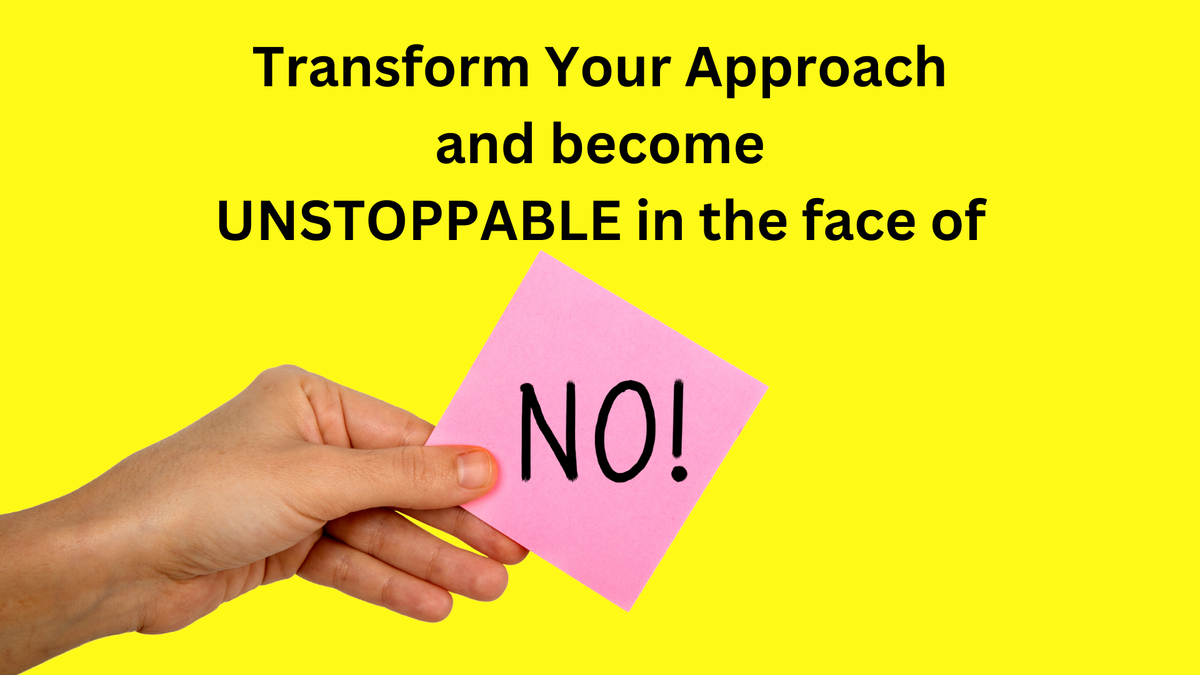
In a world that often glorifies the "yes," it's time to get radical and start celebrating the "no." Yes, you heard that right. It’s time to play the "No Game," a brilliantly unconventional strategy that I’ve introduced to rewire our reactions to rejection. It’s not just a game; it’s a transformative approach to life and business, making "no" the new "yes" in terms of personal growth and resilience.
The Stigma of "No"
From early childhood, we're conditioned to perceive "no" as a door slamming in our faces. It’s one of the first negatives we encounter, often accompanied by a wagging finger or a stern look. It feels like a stop sign, an end to our desires. However, what if we could change that? What if "no" became a stepping stone rather than a stumbling block?
The Concept Behind the "No Game"
The "No Game" is designed to shake up our conventional understanding of success and rejection. The goal? To accumulate as many "no" responses as possible. Why? Because each "no" chips away at our fear of rejection, helping us become fearless in the face of adversity and more adept at navigating the path to our goals.
How to Play the "No Game"
- Set a Clear Goal: Aim to collect 60 "no"s in 14 days. This target is ambitious, pushing you out of your comfort zone.
- Start Small, Think Big: Begin with requests that are likely to be turned down and gradually increase the stakes as you become more comfortable.
- Celebrate Every "No": Each rejection is a point scored. This mindset shift is crucial—celebration turns the pain of rejection into a badge of honor.
- Keep Pushing: If you get a "yes," don’t settle. Make a bigger, bolder request. It’s about moving those goalposts and expanding your comfort zone.
- Track and Reflect: Maintain a tally of your attempts and outcomes. Reflect on your progress and the shifts in your perception of rejection.
The Psychological Shift
Embracing "no" is profoundly liberating. It dismantles the fear that holds many back from asking for what they want or need. By playing the "No Game," you’re not just learning to handle rejection better; you’re learning to pursue your goals with a tenacity that refuses to be dampened by a mere two-letter word.
The Surprising Statistics
Studies have shown that perseverance in the face of rejection pays off. On average, for every 20 "no"s, you might receive three "yes" responses. These numbers highlight the importance of volume and persistence—keep asking, keep playing, and the "yes"s will come.
Beyond the Game
Implementing the "No Game" in everyday life can lead to significant improvements in personal and professional realms. It can enhance your negotiation skills, boost your confidence, and refine your approach to problem-solving.
Practical Tips for Success
- Plan Your Requests: Don’t just wing it. Strategize the who, what, when, and how of your requests to optimize your chances of eventually getting a "yes."
- Stay Positive: Keep your spirits high, regardless of the outcomes. Positivity will make the game feel less like a chore and more like a challenge.
- Use Feedback: Learn from each "no." Seek feedback where appropriate and use it to refine your approach.
The "No Game" isn’t just a playful challenge—it’s a powerful tool for growth. It teaches us that behind every "no" lies an opportunity to evolve, to innovate, and to move closer to our ultimate goals. So, let’s start chasing those "no"s, because on the flip side of rejection is the path to our success. Ready to turn your "no"s into stepping stones? Let's get this game started!
By mastering the art of dealing with rejection through the "No Game," you are not just playing to win; you're transforming your approach to life itself, making you unstoppable in the face of any challenge.
Shawn Bearman
